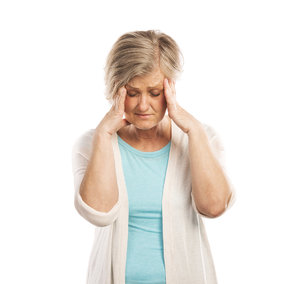Greetings
Happy New Year from all of us at Iron City Physical Therapy. We hope that you had a great Holiday season and we wish you all the best for 2015.

In our January edition of our newsletter we are discussing headaches and how physical therapy can help.
There are three common types of headaches: tension, migraine and cluster headaches. Among the three types, tension headaches are the most common form and they are often the result of stress or fatigue. In addition to tension, fatigue and stress, factors that have been associated with the onset of headaches include prolonged desk work or manual labor, dramatic changes in eating or sleeping habits, and even poor posture. If the factors that are triggering headaches are not properly identified and addressed, the headaches may become chronic. In some cases, however, neck, back, and shoulder pain may be contributing to the occurrence of persistent headaches. A constant headache may also be the result of an underlying condition or serious injury.
| The brain itself does not contain nerves that are responsible for pain sensations - which means the brain tissue itself can’t “hurt”. The actual pain of headaches originates in structures or tissues in the surrounding regions of the brain and, therefore, a headache typically signals an issue in the body that needs to be addressed. Most headaches can easily be treated with over the counter pain relievers (e.g., aspirin, acetaminophen, ibuprofen), but chronic headaches may require a more therapeutic approach, especially if the headaches may be the result of pain referred from the body (e.g., neck or upper back pain). In such cases, physical therapy can help individuals address the cause of the headaches, and in doing so, reduce their occurrence. |
 |
If an individual is suffering from tension headaches, for example, therapy may involve teaching the person relaxation and coping strategies that can be used when stressful situations arise that have been found to be the triggers for their headaches. If it is believed that body pain (e.g., shoulder or back pain) is causing the tension headaches, then the physical therapy will more than likely focus on relieving muscle tension as well as teaching an individual stretching and strength-training exercises. Once a Physical therapist feels as if an individual has learned how to properly perform the exercises, they can then be incorporating into a home exercise program, or easily done while at work. Individuals who continue to engage in their physical therapy exercises generally experience relief from headaches and body pain. Furthermore, the therapeutic techniques can become a long-term approach to avoiding the headache triggers, stopping a headache if it does start, or reducing its intensity and frequency.
If you are experiencing chronic headaches or even neck, shoulder, or back pain that you believe may be associated with the occurrence of your headaches, our trained professionals at Iron City Physical Therapy can show you stretching exercises and physical therapy methods that have proven to be useful. Neck and shoulder training, in particular, has been shown to reduce both headaches and body pain. Furthermore, some of the techniques can even be performed at the workplace.
Our Physical therapists would be happy to assess your current physical state and create a program tailored specifically to your needs and goals. Call Iron City Physical Therapy to make an appointment or to ask any questions you may have.
References
- Williams LA. A concise discussion of headache types, Part 1. Int J Pharm Compd. 2012; 16(2):125-32.
- Amiri M, Jull G, Bullock-Saxton J, Darnell R, Lander C. Cervical musculoskeletal impairment in frequent intermittent headache. Part 2: subjects with concurrent headache types. Cephalalgia. 2007; 27(8):891-8.
- Abaspour O, Javanshir K, Amiri M, Karimlou M. Relationship between cross sectional area of Longus Colli muscle and pain laterality in patients with cervicogenic headache. J Back Musculoskelet Rehabil. 2014; in press.
- Fernández-de-Las-Peñas C, Ge HY, Alonso-Blanco C, González-Iglesias J, Arendt-Nielsen L. Referred pain areas of active myofascial trigger points in head, neck, and shoulder muscles, in chronic tension type headache. J Bodyw Mov Ther. 2010; 14(4):391-6.
- Gram B, Andersen C, Zebis MK, Bredahl T, Pedersen MT, Mortensen OS, Jensen RH, Andersen LL, Sjøgaard G. Effect of training supervision on effectiveness of strength training for reducing neck/shoulder pain and headache in office workers: cluster randomized controlled trial. Biomed Res Int. 2014; 2014:693013.
|
|